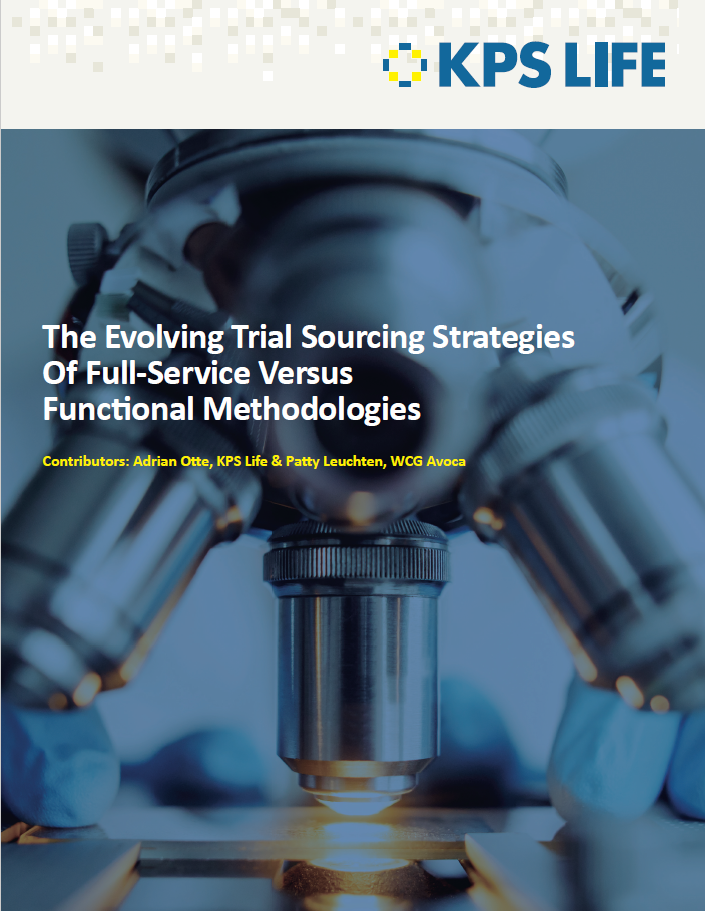
Within the complex world of clinical trial outsourcing, drafting a request for proposal (RFP) to solicit comparative bids can be difficult and extremely complicated. Asking the right questions is vital.
Functional service providers (FSPs) and contract research organisations (CROs) are both important service providers, but while they share similarities in terms of providing specialised expertise and resources, they differ in terms of the scope of services offered and the level of integration with the client’s organisation.
CROs offer a wide range of services including end-to-end solutions for drug development comprising preclinical research, clinical trials, regulatory support, and commercialisation. CROs have their own infrastructure and resources to carry out these services and often work independently from the client’s organisation.
FSPs, on the other hand, are specialised service providers that offer specific functions or expertise to pharmaceutical companies. They typically work on a project basis and provide services such as clinical trial support, data management, statistical analysis, and regulatory support. FSPs are often integrated into the client’s organisation and work closely with their internal teams.
Both FSPs and CROs play a crucial role in supporting the pharmaceutical industry. However, with the FSP model, sponsors gain strategic control, allowing them to collaborate with a vendor for clinical expertise while maintaining a foothold on trial execution. The FSP model gives sponsors flexibility, enabling additions or subtractions to be made to resources based on the ebb and flow of a clinical trial. Finally, and very importantly, FSP outsourcing services can often be substantially cheaper than the full-service model.
So how can your organisation ensure that FSPs are included fairly in your request for proposal (RFP) process, and ensure you don’t miss out on a potential perfect match for services?
Perspectives on procurement
Many FSPs have recently suffered the fate of being swallowed up by large CROs and incorporated into a more general outsourcing model. However, George Sawicki, COO of KPS Life – one of the few remaining standalone FSPs – told us that sponsors can use an FSP to outsource specific functions of clinical research while retaining more control. Yet this is one of the many advantages that is often overlooked in the RFP process.
The problem is that sponsors aren’t asking the right questions, says Sawicki.
“Processes are often made with a ‘one size fits all’ approach,” he explains. “However, by including all the vendors in the same selection process, with the same evaluation criteria, FSP or specialty vendors are unlikely to be the vendor of choice. The current process fails to capture the advantages that non-full-service vendors can offer.”
Morgan Mortimer, Associate Director, Global Proposals & Sales Operations, KPS Life, agrees that the process of comparative selection between service providers is less than ideal. She highlights some of the issues she sees regularly:
“Questions are often focused too heavily on the numbers, such as headcount or how many trials of a particular TA, phase, or sector. There is also often a lack of flexibility in pricing model input, with unitised pricing grids. And finally, the questions regarding the responsibility of the service provider are geared toward a full service level of accountability and functional management, rather than an FSP arrangement with sponsor accountability complimented by line management.”
Large pharma almost exclusively conduct this process through portals such as Ariba or Jaggaer, improving their efficiency when considering a large number of vendors. However, these portals make it even less conducive for smaller FSPs as they are often rigid and do not allow modifications. Where possible, the ability for the FSP to add editorial comments to provide context on disadvantageous answers can help them to demonstrate the benefits of their model in a response that might otherwise be omitted from consideration.
“It’s also helpful for our salesperson to create a cover letter or email to the procurement team to potentially start a dialogue about services and where they could be a solution outside of the ‘mainstream’ services within the bid,” says Mortimer.
The importance of diversity
Sponsors usually prefer to use a finite number of providers, or even a single provider, but this means they may be missing out on a provider model that could be a better match for their study. A lack of diversity in responses means missed opportunities for potential cost benefits. It could even result in delays or an impact to study quality in cases where trials could have been better managed in an FSP setting.
“We need a shift away from questions which are exclusionary to vendors outside of the large CROs or focus too heavily on qualifiers which do not actually inform the sponsor about a customised solution for their trial,” he says. “We’d advise an alignment of objectives at the sponsor prior to procurement – with the clinical team – to understand where their pain points are and develop questions that discern vendors who have a solution to those problems.
“If clinical has been underwhelmed with a CRO’s performance on a trial, is it the CRO or is it the model?” says Mortimer. “Do they want more control? Transparency? Are the resources able to be guaranteed as fully dedicated? These are indicators that a shift in model may be an answer, rather than simply a shift in vendor.”
“The solutions have changed. The providers have changed. But the questions and the RFPs haven’t.”
For more information on the FSP model, download the free whitepaper below.




